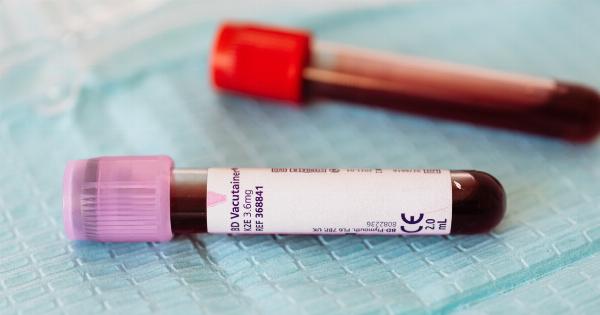Early detection of life-threatening illnesses is crucial for effective treatment and improved healthcare outcomes. Many serious diseases, such as cancer, heart disease, and autoimmune disorders, show minimal symptoms in their initial stages.
As a result, they often go undetected until they have advanced to a more critical and less manageable stage.
Traditional diagnostic methods rely on time-consuming and expensive laboratory tests, which can delay diagnosis and treatment initiation.
However, with advances in healthcare technology, a faster and more efficient solution is now available – the fast blood test.
What is a Fast Blood Test?
A fast blood test, also known as rapid blood testing, refers to a diagnostic procedure that delivers quick results by analyzing a small sample of blood.
Unlike traditional blood tests that require sending samples to a laboratory and waiting for days or weeks, fast blood tests provide actionable information within minutes or hours.
These tests can detect a broad range of medical conditions and help healthcare professionals make accurate and timely diagnoses.
Fast blood tests utilize innovative techniques and technologies to deliver rapid and reliable results, making them an invaluable tool in the early detection of life-threatening illnesses.
The Advantages of Fast Blood Tests
The development and adoption of fast blood tests bring numerous benefits to both patients and healthcare providers. Here are some key advantages:.
1. Early Detection
Fast blood tests enable the early detection of various life-threatening illnesses. By identifying diseases in their initial stages, healthcare professionals can intervene early and implement appropriate treatment plans to improve patient outcomes.
2. Time-Efficiency
Unlike traditional laboratory tests, which may take days or weeks for results, fast blood tests provide almost immediate results. This time-efficient diagnostic method helps reduce patient anxiety and allows for prompt medical decision-making.
3. Cost-Effectiveness
Due to their rapid turnaround time, fast blood tests require fewer resources, including laboratory equipment and personnel. This translates into cost savings for patients, healthcare providers, and insurance companies.
4. Convenience
Fast blood tests can be performed at the point of care, including hospitals, clinics, or even at home.
Patients no longer have to schedule separate appointments or wait in long queues at laboratories, making the testing process more convenient and accessible.
5. Reduced Infections
As fast blood tests eliminate the need for transporting samples to centralized laboratories, the risk of contamination and infection transmission is significantly reduced.
This ensures a safer testing environment for both patients and healthcare providers.
6. Improved Monitoring
Regular fast blood tests enable healthcare professionals to monitor the progress of a disease and evaluate the effectiveness of ongoing treatments. This allows for timely adjustments to treatment plans, leading to improved patient outcomes.
Potential Applications of Fast Blood Testing
Fast blood testing has the potential to revolutionize the healthcare industry by providing quick and accurate diagnoses for a wide range of illnesses. Here are some potential applications of this groundbreaking technology:.
1. Cancer Detection
Early detection of cancer significantly increases the chances of successful treatment.
Fast blood tests can identify specific biomarkers associated with different types of cancer, enabling healthcare professionals to detect malignancies at an early stage and administer timely interventions.
2. Infectious Disease Screening
Fast blood tests can rapidly detect various infectious diseases, including viral infections like HIV, Hepatitis, and COVID-19.
These tests can help identify infected individuals early, preventing the further spread of contagious diseases within communities.
3. Autoimmune Disorder Diagnosis
Autoimmune disorders, such as rheumatoid arthritis and lupus, often present with nonspecific symptoms, making diagnosis challenging.
Fast blood tests can detect autoantibodies present in these conditions, allowing for earlier diagnosis and treatment initiation.
4. Cardiac Risk Assessment
Fast blood tests can assess cardiac risk factors, including cholesterol levels and markers of inflammation.
By identifying individuals at high risk of developing heart disease, healthcare professionals can implement preventive measures and lifestyle modifications to reduce cardiovascular events.
5. Point-of-Care Testing in Underserved Areas
Fast blood tests are particularly beneficial in underserved areas with limited access to healthcare facilities and diagnostic laboratories.
These tests can be administered in remote regions, enabling healthcare providers to deliver prompt and accurate diagnoses, leading to timely treatment and improved healthcare outcomes.
The Future of Fast Blood Testing
The development and rapid advancement of fast blood testing technology offer immense potential for the future of healthcare. As technology continues to evolve, we can expect faster, more accurate, and more accessible diagnostic solutions.
Researchers are constantly working on expanding the capabilities of fast blood tests by identifying new biomarkers, refining testing methodologies, and improving the integration of point-of-care devices with healthcare systems.
These advancements will further enhance the efficacy of fast blood tests and their potential to save lives.
Conclusion
Fast blood tests have emerged as a game-changer in the early detection and treatment of life-threatening illnesses.
By providing rapid and reliable results, these tests help healthcare professionals make timely diagnoses, initiate appropriate treatments, and improve patient outcomes.
The advantages of fast blood tests, including early detection, time-efficiency, cost-effectiveness, convenience, reduced infections, and improved monitoring, make them an indispensable tool in modern healthcare.
With ongoing research and innovation, fast blood testing holds immense potential to revolutionize the future of diagnosis, treatment, and patient care.





























